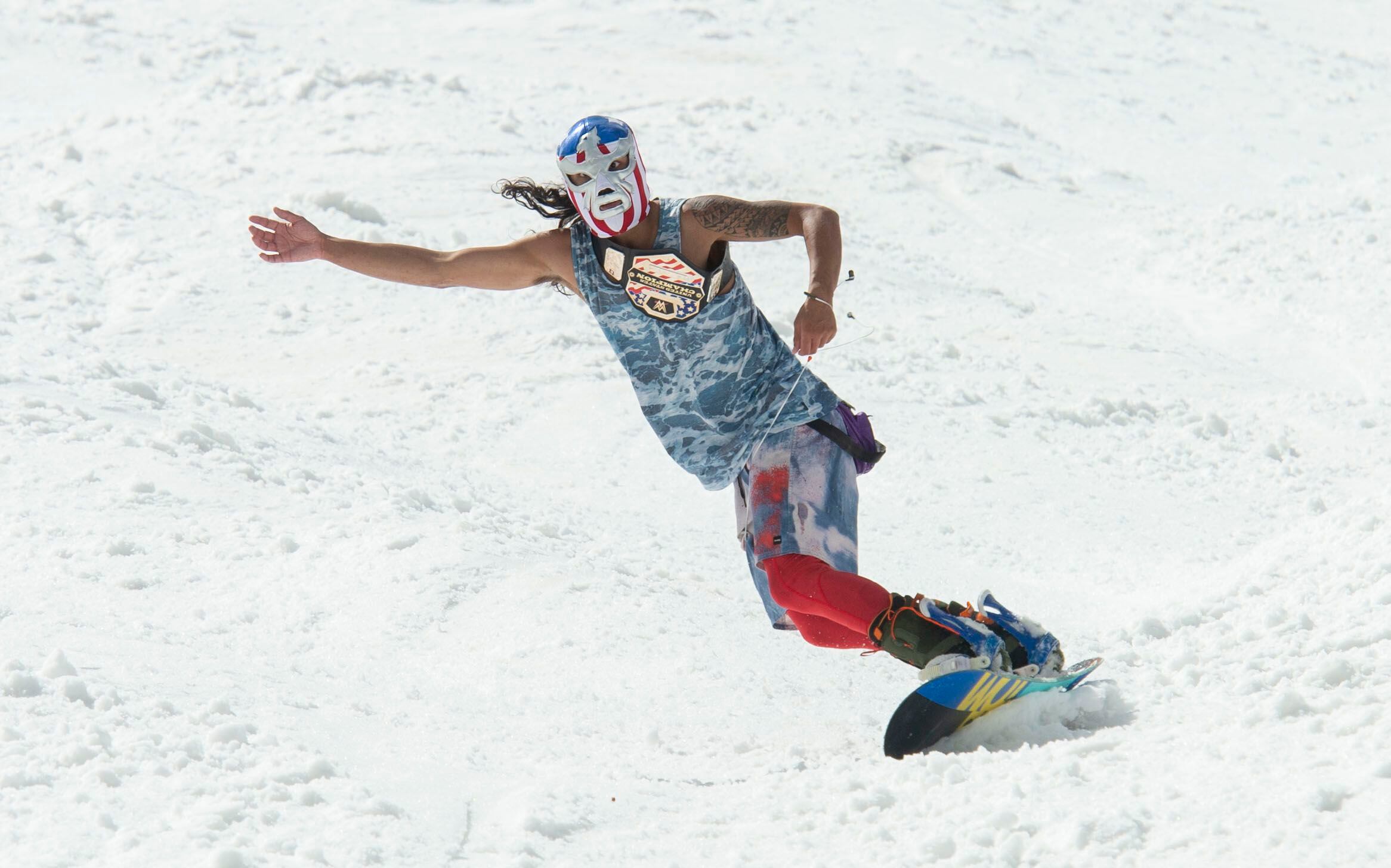


























Snowbird • For Paul Fejte, getting to ski on Independence Day captures the holiday’s meaning: a celebration of freedom.
Fejte and his wife, Denise, drove an hour-and-a-half from Eden to experience their first Fourth of July ski experience, marking their 102nd day on the slopes this season.
“It was for sure worth the wait and the line," he said.
Fejte combined his love for skiing and patriotism by wearing a tall red-and-white striped hat atop his red-white-and-blue curly wig. He also wore a red-white-and-blue coat with his father’s “professional ski instructor” pin, to honor his father’s 50 years as a ski instructor.
He joined about 3,500 other skiers and snowboarders to spend the holiday on the slopes of Snowbird, and it was a rare treat.
“Snowbird has been open for 48 years and it’s only happened five times in those 48 years,” said Brian Brown, Snowbird communications manager. “It’s about every eight to 10 years that we get to do this.”
Brown said Snowbird received about 711 inches of snow this year, 200 more inches than their average snowfall.
“From the beginning of December, it started snowing and it didn’t stop snowing until the end of April,” he said.
Snowbird shifted from being open for winter sports every day to only weekends in late May. Last week, Snowbird executives decided they had just enough snow to mark the end of their season on the Fourth of July. None of Utah’s 12 other resorts was open.
“We always pride ourselves on having the longest season of all the resorts in Utah, so to be open on the Fourth really just kind of cements that,” Brown said.
The resort sold limited tickets, and by mid-morning they were sold out and prompted the resort to share a message on social media asking people to who weren’t at the resort to “refrain” from coming. And although there was enough snow to ski some runs, those that were open were expert terrain.
This season, Utah resorts had a record snow year. All 13 surpassed their averages; four broke accumulation records. It was welcomed after last year was one of the worst for snow in state history, which required resorts to do more snowmaking — and that significantly increases operating costs.
Happy 4th July from the top of the world! pic.twitter.com/3P4O7swIX9
— Snowbird (@Snowbird) July 4, 2019
Most patrons wore red, white and blue items Thursday, along with themed costumes and other festive outfits traditional for the last day of ski and snowboard season.
“It’s fun up here because it’s like a mixture of the last day shenanigans and Fourth of July stuff,” said James Perri, of Sandy. Perri skied at Snowbird the last time it was open on July Fourth — in 2011.
“One of the best parts is, there’s a couple places you have to ride through dirt to get to the other patches, so a lot of people will stop and hike and stuff,” he said.
David Weinsten, a new Salt Lake City resident from Chicago, said he had never dreamed of being able to ski in July, but he has held out hope since he moved to Utah.
“We’d been preparing for this for months,” Weisntein said.
Others said the decision to ski was spontaneous but still a “bucket list” item they were happy to check off.
“Just being able to say that you can do it. That was a big check off the list for me,” said Anthony Garcia, of Sandy. “Being able to do this just once made the line worth it.”
The ski run was open for five hours, and most participants said they waited from one to three hours in line but felt the experience was worth the wait.
“It’s just a unique experience. Not very often you get to ski this late in the year,” said Patrick Ferrara, of Salt Lake City.


































